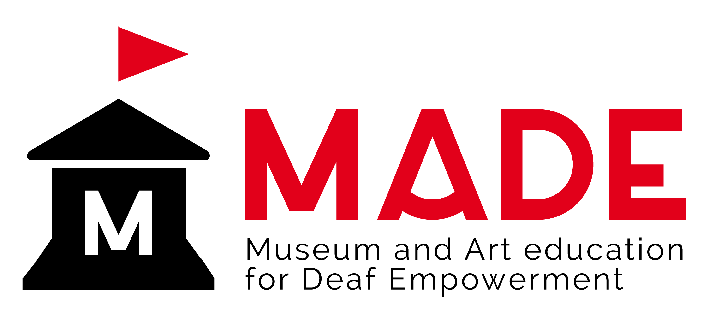The project
MADE – Museum and Art education for Deaf Empowerment is an ERASMUS+ Youth project. It started in February 2019 and lasts 24 months. There are eight project partners from six European countries (Austria, Ireland, Italy, Poland, Romania and Slovakia).
The aim of the project is to develop a learning model to train young Deaf people aged 18 to 35 to become museum guides for Deaf museum visitors. This leads to greater inclusion in society and at work for young Deaf people. At the same time, museums become more attractive to a Deaf audience. The project looks at diversifying the interpretative tools and practices, spaces and collections of museums. In this way, museums become a tool for the inclusion of Deaf people.
At the same time, museums become more attractive to a Deaf audience. The project looks at diversifying the interpretative tools and practices, spaces and collections of museums. In this way, museums become a tool for the inclusion of Deaf people.
Why focus on museums and art?
People do not need specialist knowledge and learning to understand and enjoy art. What is important is the art itself. When young Deaf people train as museum guides, other people from the Deaf community become interested too. It changes the relationship between the Deaf community and the museum community. This creates new opportunities and new possibilities for art interpretation by a community that communicates through visual language.
During the project, the partnership expect to achieve the following results

Production of knowledge about the best contents and methodologies to make able young Deaf people to learn about art.

Definition and implementation of a curriculum for young Deaf people for becoming museum guides for Deaf audience, so to boost their social and working inclusion.

Improvement of young Deaf people competences about the interpretation and communication of works of art.

Acquisition of competences by young trainers and elaboration of open educational resources.
